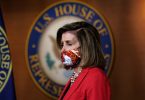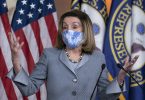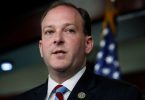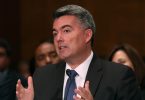The House’s Oversight Subcommittee on Economic and Consumer Policy found that just 13 passengers on direct flights from Italy and 56 from South Korea were stopped before boarding planes to the U.S. during this 11-day period, according to State Department data provided to the panel. The subcommittee also indicated that agencies with a hand in the policy — including State, the Department of Homeland Security and the CDC — provided no documentary evidence that screenings were being performed as promised.
And the panel also received no clear explanation why the U.S. policy applied only to direct flights from Italy and South Korea, excluding passengers who had layovers en route to the United States. In written responses, the State Department indicated that the decision was made by Customs and Border Protection. A CBP official disputed this suggestion, however, and said the agency would have had no role in limiting the policy to direct flights.
“After imposing a travel ban and enacting health screenings for travel from China at the start of February, the president told us they had everything under control,” said Rep. Raja Krishnamoorthi (D-Ill.), chairman of the Oversight subcommittee. “Yet, the administration did little else to stop the inflow of the virus through our airports until mid-March, and it disregarded valuable opportunities to slow the spread through enhanced entry screenings.”
The White House did not comment. DHS and the CDC did not respond to requests for comment.
The gaps during a crucial stretch at the outset of the U.S. outbreak of coronavirus raise new questions about the country’s readiness to combat the pandemic, and the decision-making at the highest levels of government at a time when Trump was downplaying the threat of the virus.
Trump has, since then, repeatedly pointed to his travel restrictions as an example of his proactive efforts to combat the spread of coronavirus. But the subcommittee’s inquiry suggests some of those early steps may have been inconsistently applied and that the decision to limit the process to direct flights might have had consequences.
The subcommittee launched its investigation in mid-March after receiving letters from U.S. citizens who traveled from Italy and South Korea during the March 3-14 period and asserted they were never screened or that they received minimal information about coronavirus. One, who took a flight from Rome with a layover in Portugal, described “harsh coughing” among some passengers on her flight to Lisbon.
Vice President Mike Pence, who heads the White House’s coronavirus task force, announced the screenings on March 2, telling reporters, “Within the next 12 hours, there will be 100 percent screening, all direct flights at all airports across Italy and across South Korea.”
The recommendation for relying on Italy and South Korea to carry out temperature screenings at their airports came from the CDC and was presented to the task force, which thought that it made sense, according to a Trump administration official familiar with the matter. Top public health officials raised questions about the effectiveness of conducting the physical checks at U.S. airports.
The official said a question was raised about how the U.S. government could verify that the screenings were actually taking place in Italy and South Korea. They were reassured that State Department and Federal Aviation Administration officials in those countries would check to make sure that Italy and South Korea were living up to their promises and such visits did end up happening.
The reason travel from South Korea was not blocked altogether during that time period is that the country offered a comprehensive multi-layer screening to avoid getting slapped with the same order that barred travel from China. After internal discussions, including among doctors, the administration agreed to South Korea’s request.
The official indicated that temperature screening was not instituted at U.S. airports that had flights arriving from Italy and South Korea because the government’s medical and health professionals “did not put too much stock into” such screening, saying it only captured about 40 percent of cases.
Source: politico.com
See more here: news365.stream






